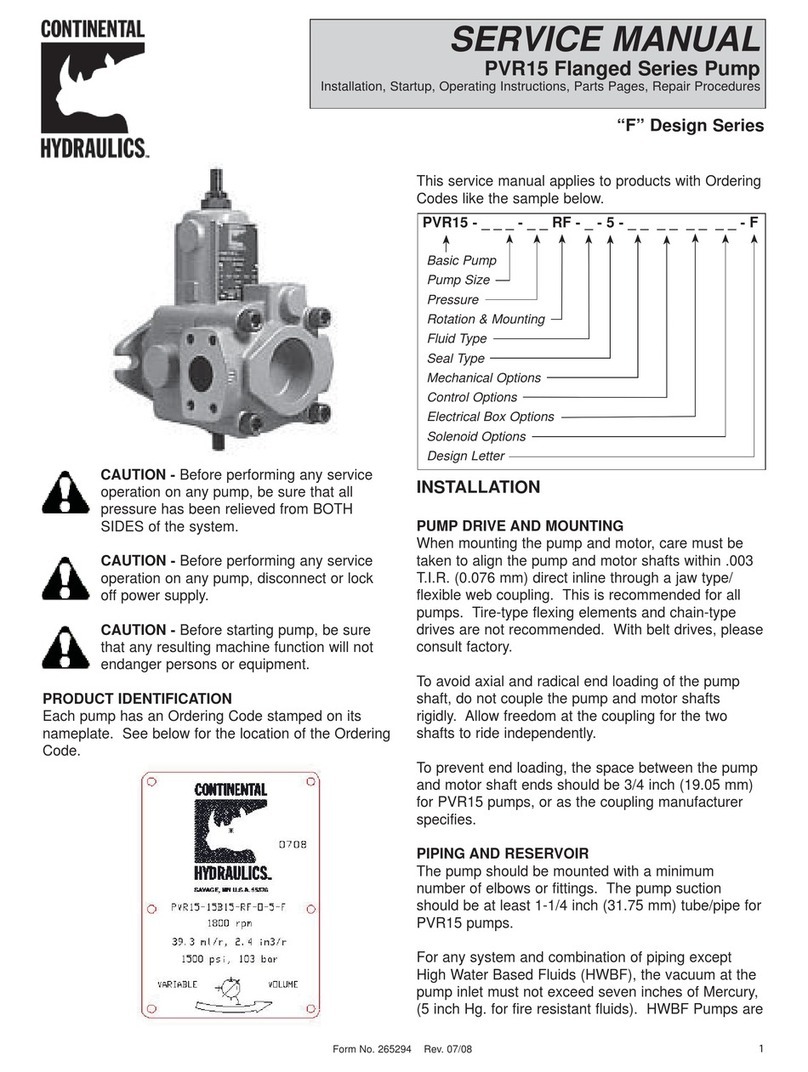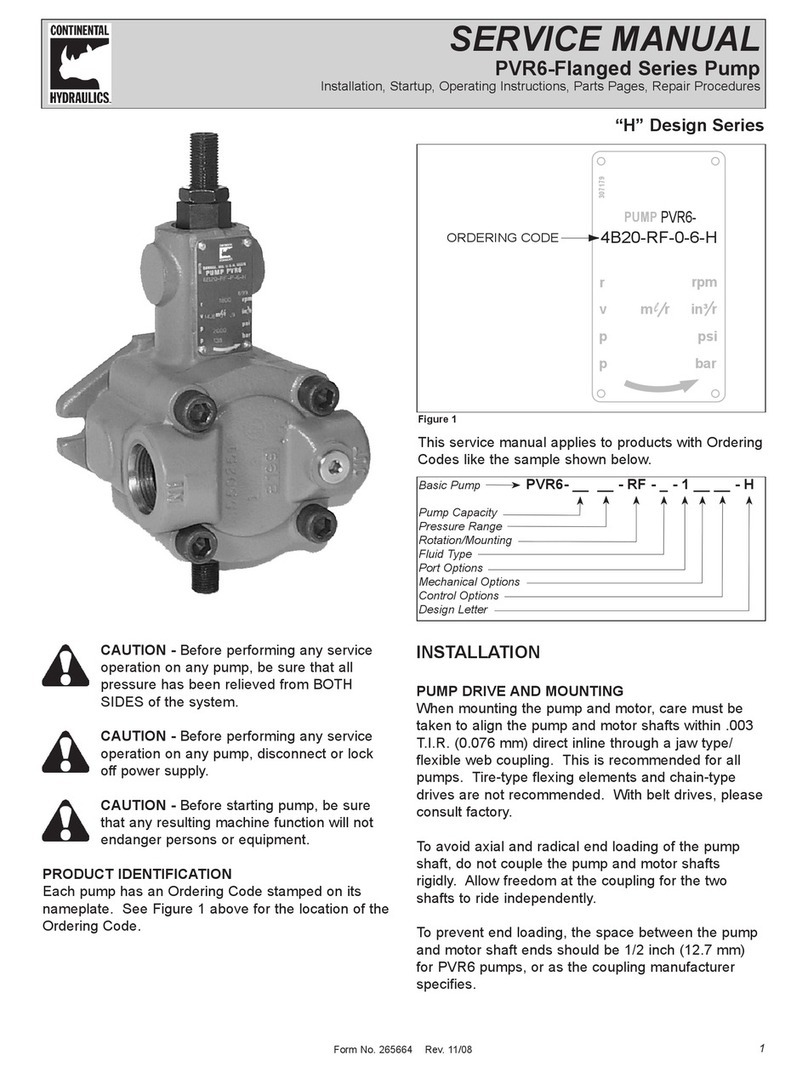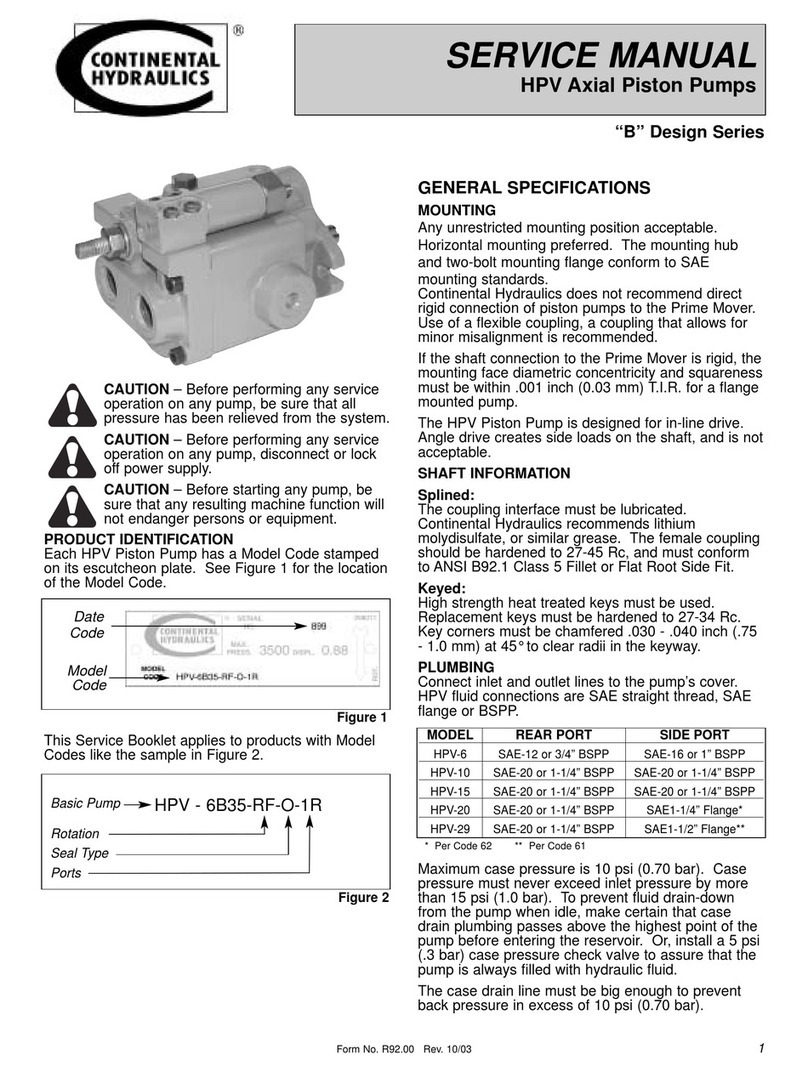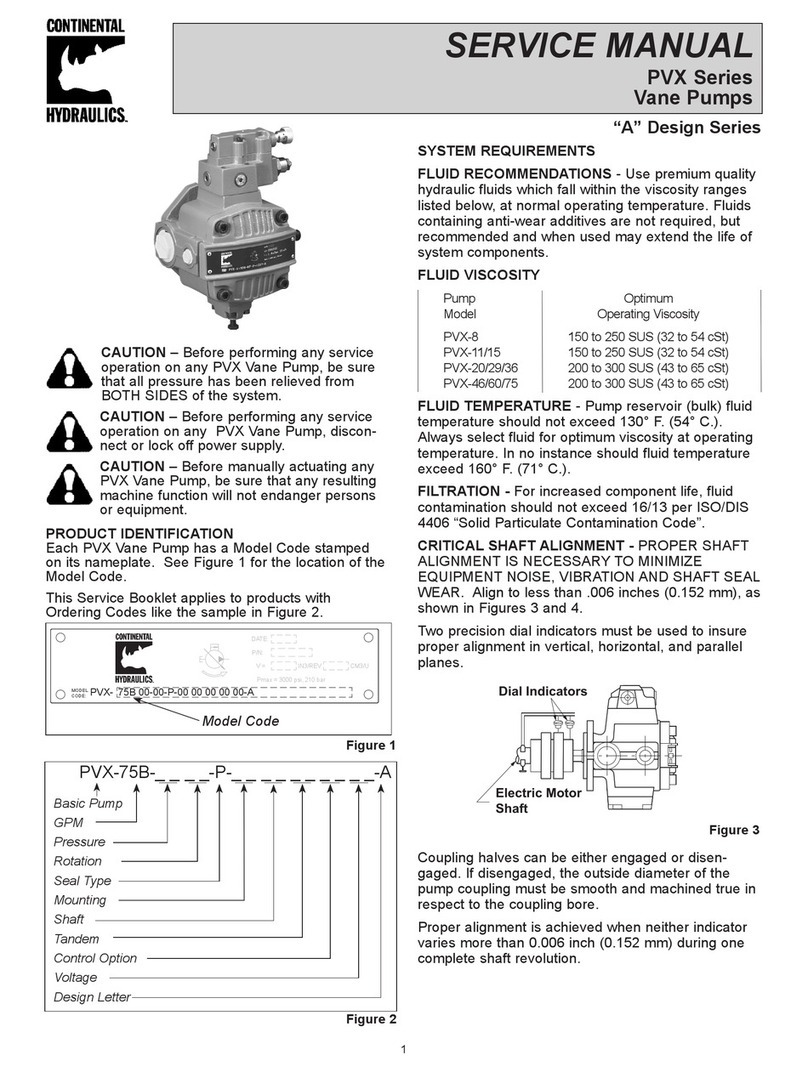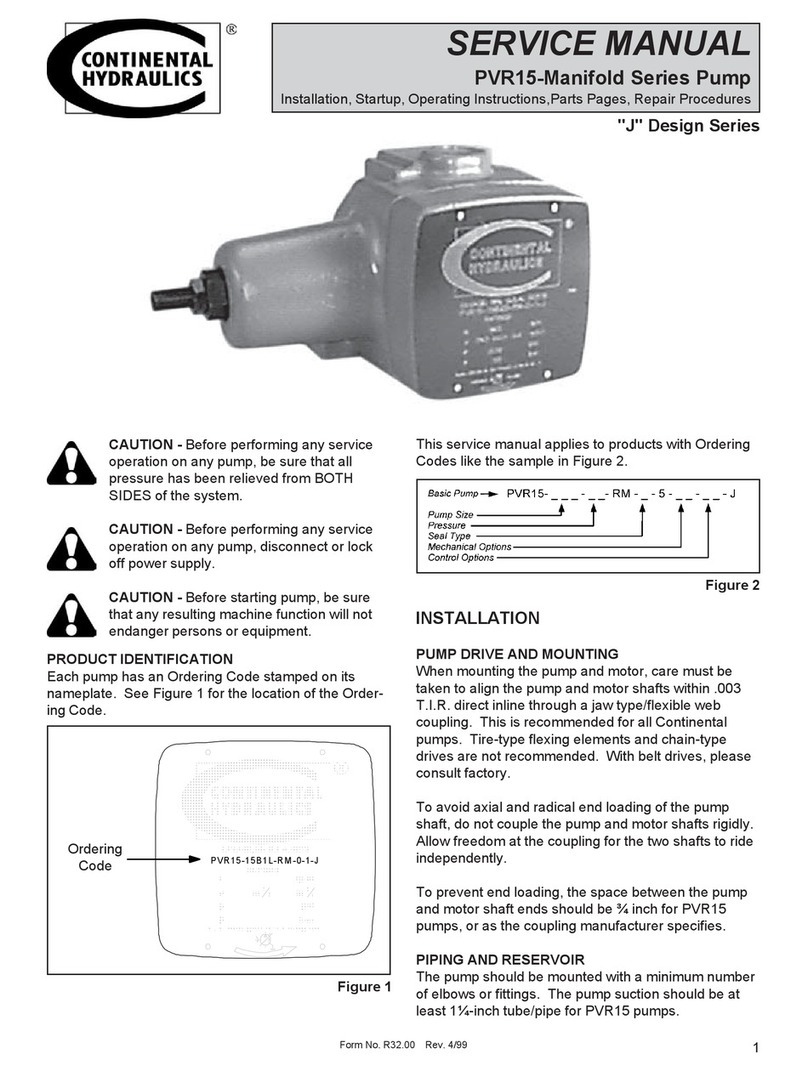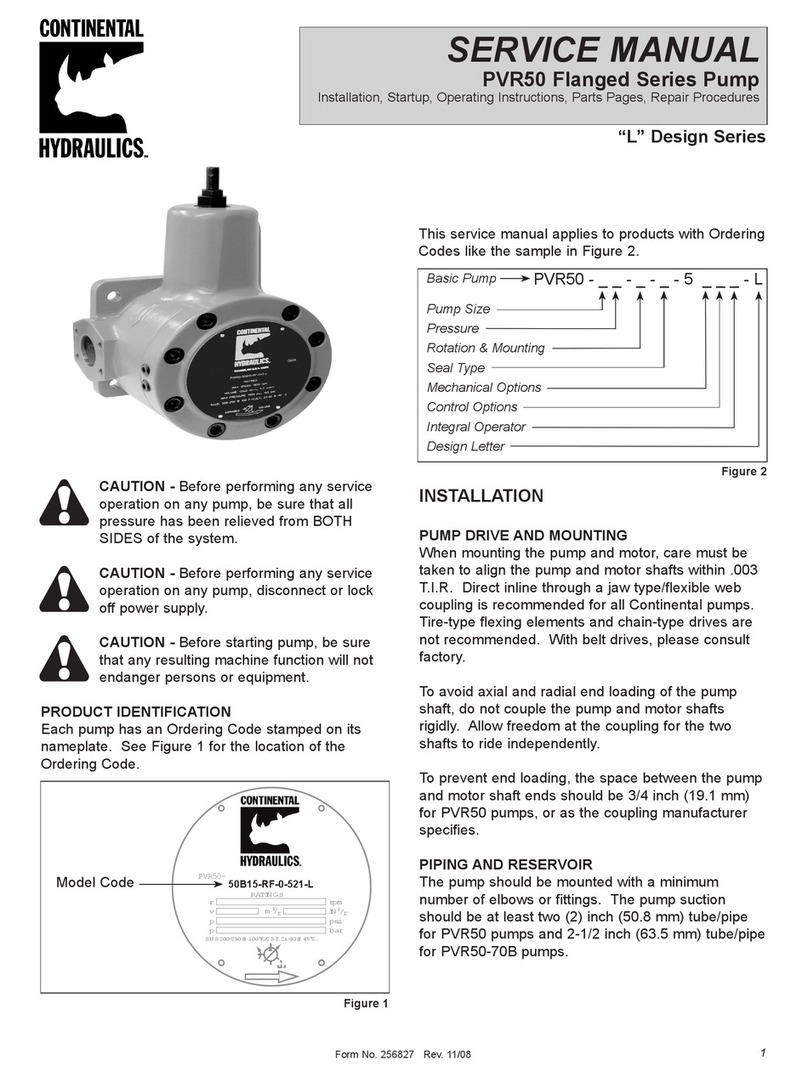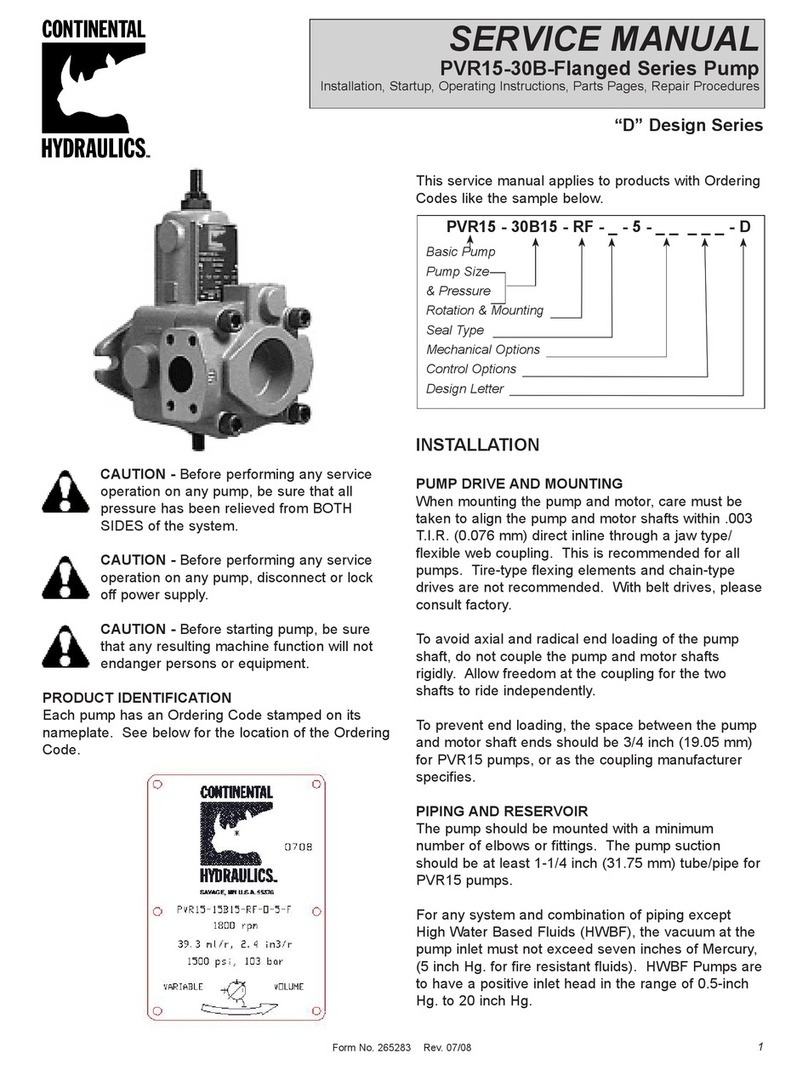
2Form No. 253585 Rev. 04/19
PIPING AND RESERVOIR
The pump should be mounted with a minimum
number of elbows or fittings. The pump suction
should be at least one (1) inch (25.4 mm) tube/pipe
for PVR1 pumps. For any system and combination of
piping except High Water Based Fluids (HWBF), the
vacuum at the pump inlet must not exceed seven (7)
inches of Mercury, (5 inch Hg. for fire resistant fluids).
HWBF Pumps are to have a positive inlet head in the
range of 0.5-inch Hg. to 20 inch Hg.
Piping should be done with pickled pipe or seamless
tubing free of dirt and scale. Do not use galvanized
or other pipe that tends to flake off.
A 100-mesh screen (60 mesh for fire resistant and
HWBF) should be used on the pump suction line.
The screen should be located approximately two (2)
inches (50.8 mm) from the bottom of the tank. All
lines returning oil to the tank should discharge at least
two (2) inches (50.8 mm) below the minimum oil level
and should be separated from the pump suction area
by means of a baffle. These lines should also include
a 10-micron return line filter, with the exception of the
case drain line.
The pump case drain should be connected directly to
the tank. Pressure in excess of 10 psi (0.7 bar) in the
case drain line can result in shaft seal leakage. It is
recommended that the case drain be returned to the
tank by a separate 3/8-inch (9.5 mm) line.
STARTUP PROCEDURES
The following instructions apply for initial start-up of
the hydraulic pump. After an extended shutdown
period, start with item 5.
CAUTION - Never start a new pump installa-
tion against a blocked system.
1. Check the nameplate for model number and rpm.
The arrow on the pump casting and/or nameplate
indicates direction of rotation.
2. Pump suction line should extend below the lowest
point of oil level but not less than two (2) inches (50.8
mm) above reservoir bottom.
3. The pump and motor shafts must be aligned within
.003 inches (.08 mm). (See Pump Drive and Mounting
directions above for restrictions).
4. Connect the case drain directly to tank (or to a
heat exchanger if the pump will be deadheading for
long periods of time during operation) using a full-size
line corresponding to the case drain in the pump or
manifold. If connected to a heat exchanger, the case
drain line should be protected with an 8 psi (0.55 bar)
maximum relief valve in parallel with the heat
exchanger. No other return lines should be connected
in common with the case drain return.
5. Rotate pump and motor by hand to insure free
rotation.
6. Set the machine controls to open the circuit and
allow free flow from the pump back to tank or connect
the pump outlet line directly to tank. Jog the motor on
and off several times (on two seconds; off three
seconds) until the pump is primed. Check pump for
proper direction of rotation during the jogging.
7. After the pump has been primed, run it for several
minutes at lower than normal pressures with an open
or intermittently open system which permits oil flow.
This will purge entrapped air from the pump and
system.
8. Neither volume adjustment nor pressure
adjustment should be adjusted until the pump has
been primed and running, and air is purged.
9. After air has been purged from the system, the
system can be closed and the pump adjusted to the
required operating pressure.
10. If necessary, the volume adjustment can be
adjusted to limit maximum output to the desired
amount.
11. When replacing pumps, the suction screen in the
reservoir must be removed and thoroughly cleaned.
Also, the suction line from the reservoir to the pump
must be flushed inside and out to remove any
contaminants. Pieces of metal from a damaged pump
can back up into this line. If they are not removed,
they will be drawn into the new pump and destroy it.
Start unit by using proper pump start-up procedures
as previously stated.
CAUTION - If both pressure and volume
controls are supplied on the pump, the
pressure should be adjusted before the
volume. Volume should be adjusted at minimum
pump pressure or at deadhead. Stop adjusting the
volume screw when pressure begins to drop.
OPERATION
Pressure Control Adjustment
All pumps (except those with special volume or
pressure requirements) are adjusted to reduced
pressure before shipment and must be readjusted to
the required system pressure after installation and
start-up.
